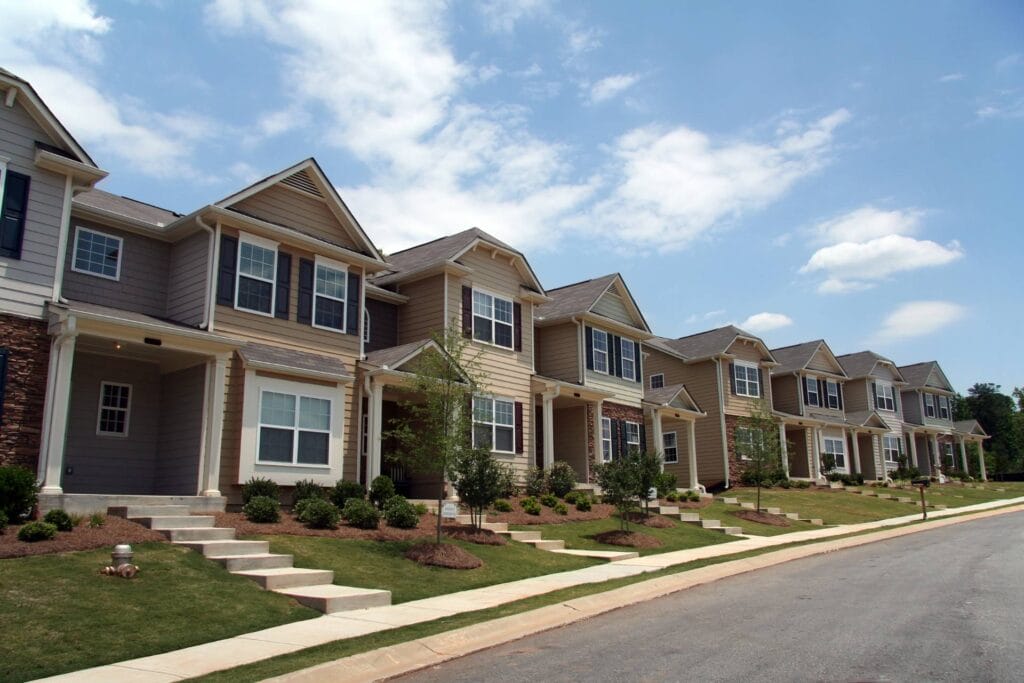Whether you are an investor with multiple financed properties, or you’re simply a homeowner trying to purchase a vacation property, it can be difficult (but certainly not impossible) to find top-quality financing for your next purchase.
For a variety of reasons, organizations and lenders often limit the amount of financed properties a person can have and still qualify for a loan. This makes purchasing second homes more complex, and it can create frustrations for investors looking for expand their portfolio.
But there are options available. Programs from Fannie Mae, as well as our own program that allows for up to 20 financed properties, help you break the barrier created by multiple financed properties.
Why Are There Limits and Restrictions for Multiple Financed Properties?
With mortgage lending (or any type of lending, for that matter), it’s all about risk. Measuring, calculating, and managing risk. To put it simply: the more financed properties a person has, the greater the statistical risk for default on one or more of these loans.
Therefore, when someone has multiple financed properties, lenders use risk-reduction methods, such as higher credit score requirements. (Someone with a high credit score is less likely, statistically speaking, to default.) They may also request large cash reserves, which can be used to make payments in the event of a financial crisis.
Fannie Mae: Allowing Up to Ten Finances Properties
The first option, and one of the more popular choice for investors, is a loan supported by Fannie Mae. While Fannie Mae generally supports the purchase of primary residences, they do have options that encourage the purchase of multiple financed properties.
If, after making the new purchase, you will have six or fewer financed properties, the standard eligibility process for Fannie Mae is used. LTV ratios and credit score requirements, for example, are all essentially the same as if you were purchasing your first primary residence.
But once you have seven or more (with a limit of ten in this case), the requirements begin to change. If you will have seven to ten properties with loans on them, then you must have a minimum credit score of 720. This is the only basic change, as far as Fannie Mae is concerned; all other eligibility policies apply as before.
How are Your Properties Counted?
It seems like it should be simple, but in real estate and mortgages, things can get complicated fast. How your financed properties are counted can actually be a little less than straightforward. First of all, anything that does not have a mortgage is not counted; only properties that have a loan on them are included in the count. The number will include any property with one to four units where you are personally obligated on the mortgage.

The total counts the number properties, not the number of mortgages. It seems like this should be the same, but it’s not. A property can have multiple mortgages but will only be counted once.
The total will include your primary residence if it has a mortgage. So if you have, say, eight investment properties with mortgages and your own personal home (also with a mortgage), the total will be nine.
Certain properties, however, are not included. Commercial real estate, even if it has a mortgage, will not be included in this total. If you have a multiunit property that has more than four units, it is also not added into the total. Ownership in timeshares is not included, and ownership of a vacant lot is left off as well.
Reserve Requirements Apply
While general qualifications requirements may or may not be adjusted (except for credit requirements), Fannie Mae does have reserve requirements that will change depending on the number of financed properties you own. Additional reserve requirements are applied to both a second home and an investment property, and they are based on the number of financed properties you have.
While there are credit and reserve requirements from this option, this loan program generally supports the purchase of a new property even when the borrower has multiple properties with mortgages. But if you have already have ten or more financed properties, there are options available. In fact, we offer a program that doubles the amount of allowable financed properties!
Loan Program Allows for 20 Financed Properties
With our top-quality program, you can have up to 20 financed properties. So if you currently have nineteen properties, this financing option opens new opportunities for your portfolio.
While there are other options available, this is one of the best choices for financing your investment properties. It allows you to further expand your portfolio, increasing your income stream from rental properties. The specifics will change, but this loan program offers reasonable qualification requirements, including requirements for credit, downpayment, and cash reserves. In the end, this can mean more income for your next purchase, and it could be the difference when you start to expand your portfolio
Many investors find this option highly beneficial. Even if they have the available capital, this loan option allows them to expand their portfolios while maintaining a large savings of available cash, which can be used for repairs or investments in other areas.
Get the Financing You Deserve for Your Next Purchase
If you are interested in an investment loan for a new purchase despite having multiple financed properties, contact our staff today. We’ll take a common-sense approach to your application, using all our available resources to help you get approved for the most affordable loan.
From mortgages on single-family homes for first-time buyers to large investment loans from seasoned property owners, we are here to help with all your real estate purchases.


